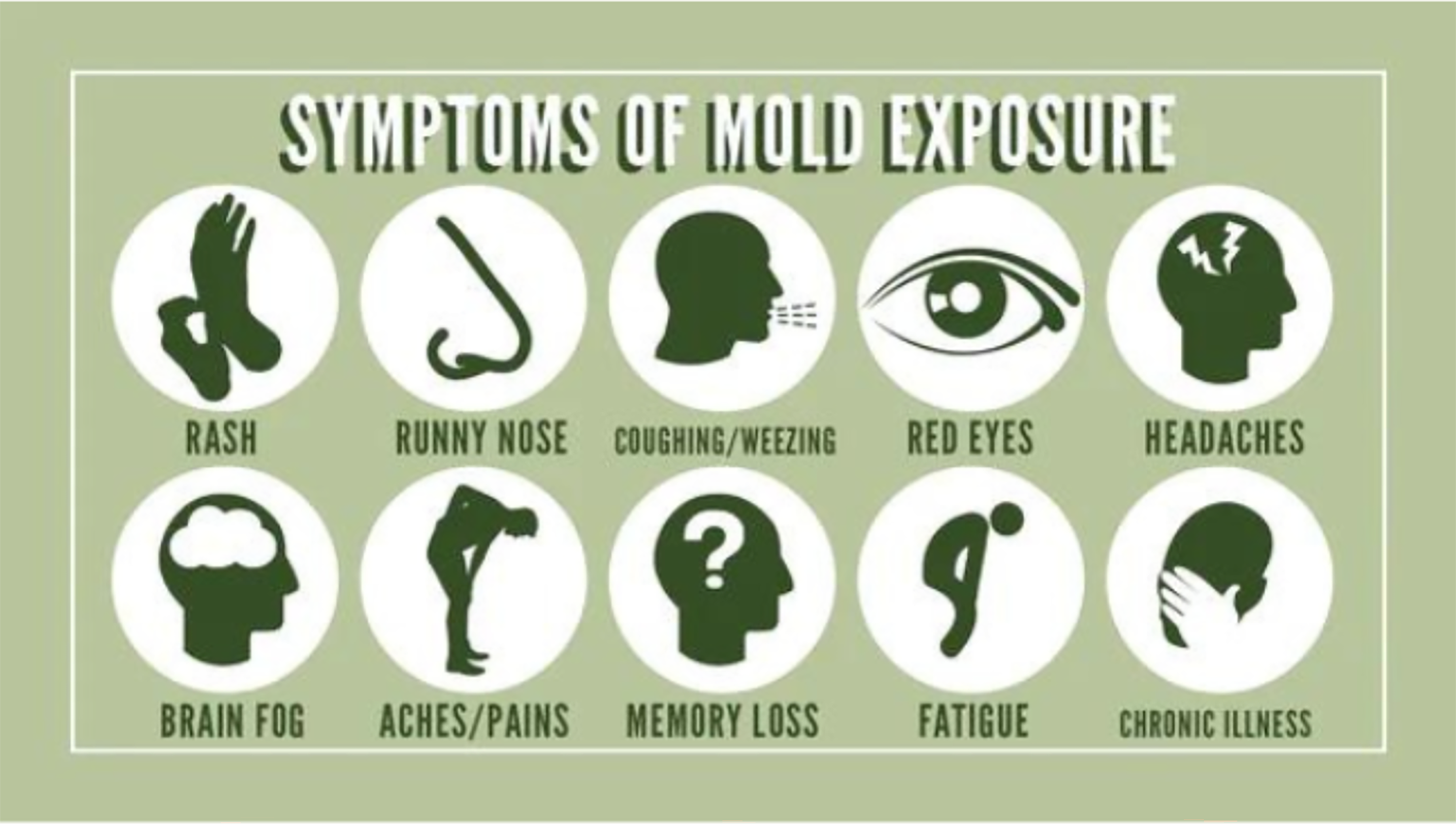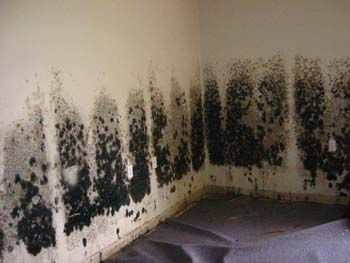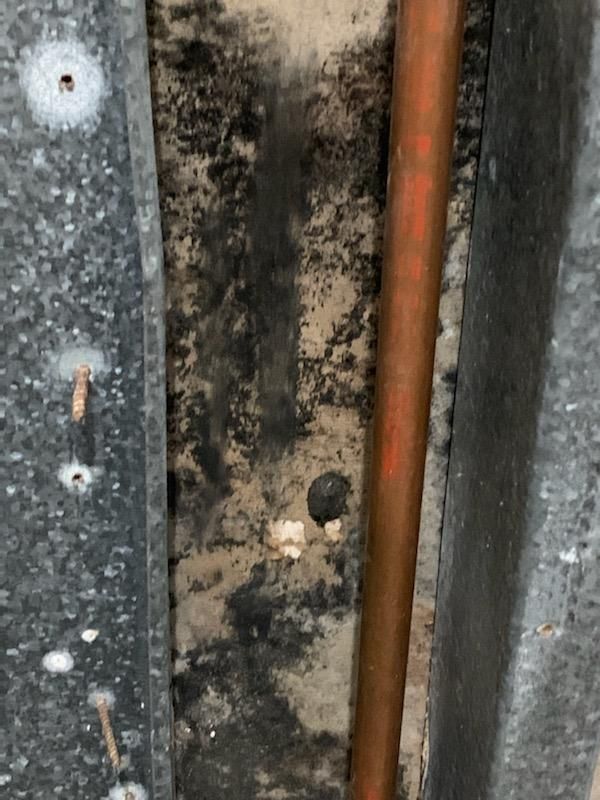Tampa Bay Black Mold Removal Health Risks, Identification Tips & FAQs
Article-at-a-Glance
- Understanding the health risks associated with black mold exposure in Tampa Bay.
- Expert tips on identifying signs of black mold in your home.
- Insight into the long-term health implications of chronic black mold exposure.
- Guidance on when to seek professional mold removal services.
- Preventative measures to keep your home mold-free post-remediation.
Why Tampa Bay Black Mold Removal Matters
Living in Tampa Bay, you’re no stranger to the humidity and warmth that can make our homes a breeding ground for mold. Black mold, in particular, isn’t just unsightly; it’s a hazard to your health and your home’s integrity. Most importantly, knowing how to tackle this issue head-on can mean the difference between a quick fix and a full-blown health crisis.
Your Health on the Line: Risks of Black Mold Exposure
When black mold takes up residence in your home, it brings a host of health risks. From allergic reactions to respiratory issues, the effects can range from mild to severe. Because of this, it’s crucial to address mold issues as soon as they’re spotted. Children, the elderly, and those with pre-existing health conditions are especially at risk, making mold removal not just a maintenance task, but a health priority.
Visible and Invisible: Spotting Black Mold in Your Home
Black mold can be sneaky, hiding in places you might not think to look. Check damp areas like under sinks, around windows, and in your bathroom. But remember, not all mold is easily visible. A musty smell is a telltale sign that mold may be lurking out of sight. If your nose is leading you to suspect a mold issue, it’s time to investigate further or call in the pros.
Let’s break it down:
- Look: Black mold often appears as dark spots or patches on walls, ceilings, or floors.
- Smell: A persistent musty, earthy odor can indicate hidden mold.
- Feel: Excessive humidity or dampness in your home can be a sign of mold growth.
Dangers Lurking in the Shadows
Mold thrives in the shadows, in places where moisture lingers and ventilation is poor. Over time, these conditions can allow mold to take hold and spread, potentially causing structural damage to your home. But the real danger of black mold lies in the health risks it poses to you and your loved ones.
Symptoms of Black Mold Sickness
Exposure to black mold can lead to a variety of symptoms, including coughing, sneezing, sore throats, and even skin rashes. In some cases, it can exacerbate asthma or lead to more serious respiratory conditions. Because of these risks, it’s vital to act swiftly if you suspect black mold in your home.
Here’s what to look out for: For more detailed information, visit the Mold section on the US EPA website.
- Respiratory issues such as wheezing, coughing, and difficulty breathing.
- Allergic reactions, including sneezing, red eyes, and skin rash.
- Persistent headaches or a feeling of fatigue.
Chronic Exposure: Long-Term Health Implications
What’s more concerning is the long-term impact of black mold exposure. Continuous inhalation of mold spores can lead to chronic respiratory conditions and other serious health issues. Therefore, addressing a mold problem isn’t just a matter of comfort—it’s a matter of protecting your health over time.

First Line of Defense: Identifying Black Mold
The first step in mold defense is identification. Recognizing the signs of mold in your home can help you take action before it becomes a larger problem. And while some signs are obvious, others are more subtle. Being vigilant can save you not only health troubles but also significant costs in home repairs.
- Discoloration on walls, ceilings, or floors.
- Peeling or bubbling paint or wallpaper.
- A strong, musty odor in certain areas of your home.
Remember, some molds are not harmful, but black mold requires immediate attention. If you’re unsure, it’s best to err on the side of caution and consult a professional.
Spotting black mold early can be the key to preventing its spread and the health issues that come with it. Keep an eye out for any irregularities in your home’s surfaces and air quality, and don’t hesitate to seek help if you’re concerned.
Where to Look: Common Black Mold Hideouts
Black mold loves damp, dark, and warm environments. Therefore, you’ll most often find it in places like your bathroom, kitchen, or basement. Check for leaks under sinks, around your bathtub, and anywhere that water might collect and go unnoticed. It’s not just about cleaning up the water; it’s about preventing the conditions that allow mold to grow in the first place.
Here are some common mold hideouts:
- Underneath kitchen and bathroom sinks.
- Around windows where condensation builds up.
- In basements or crawl spaces with poor ventilation.
By knowing where to look, you can catch mold before it becomes a major issue. Regular inspections of these areas, especially after heavy rains or any water damage, can help keep your home safe and healthy.
Clues and Cues: Distinctive Signs of Mold Infestation
Black mold is not always out in the open. Sometimes, it hides behind walls or above ceiling tiles. However, there are still clues that can alert you to its presence. For instance, persistent health symptoms like headaches or allergy flare-ups when you’re at home could signal a mold issue. Besides that, if you’ve had any recent water damage, it’s wise to be on high alert for mold growth, even if everything seems dry.
Keep an eye out for these signs:
- Water stains or discoloration on surfaces.
- Warping or swelling of materials like wood or drywall.
- A noticeable increase in indoor humidity levels.
Ignoring these signs can lead to a bigger problem. Therefore, it’s crucial to act promptly and inspect your home thoroughly if you notice any of these indicators.
Detection Tools: Using Your Senses and Technology
Your senses are your first line of defense against black mold. A musty smell or the sight of dark spots can lead you to potential mold growth. But when your senses reach their limit, technology takes over. Moisture meters, infrared cameras, and professional mold tests can uncover hidden mold and measure the extent of the infestation. Using these tools, you can make informed decisions about remediation and ensure that no mold is left behind.
Professional Mold Removal: When to Call the Experts
There comes a point when mold removal is not a DIY project. If the infestation is extensive, if mold is in your HVAC system, or if anyone in your home has health issues that make them sensitive to mold, it’s time to call in the professionals. They have the equipment, the protective gear, and the expertise to remove mold safely and thoroughly.

Here’s when to reach out for mold inspection and testing help:
- When mold covers a large area (more than 10 square feet).
- If mold comes back after repeated cleaning.
- When mold is inside walls, in crawlspaces, or other hard-to-reach places.
Professional remediation is not just about cleaning up visible mold; it’s about ensuring that your home is safe and that the air you breathe won’t harm your health.
The Limitations of DIY: When Home Remedies Fall Short
While some small mold problems can be tackled with household cleaners and a bit of elbow grease, black mold is a different story. Home remedies often fail to address the root of the problem—the moisture that allows mold to thrive. Moreover, without proper safety measures, you could expose yourself to harmful spores. Therefore, for black mold, professional remediation is usually the safest and most effective choice.
Why Speed Matters: The Costs of Waiting for Removal
Delaying mold removal can lead to increased costs and health risks. As mold spreads, so does the scope—and expense—of remediation. And the longer you’re exposed to mold, the greater the chance of developing serious health issues. So, act quickly. The cost of professional mold removal might seem high, but it pales in comparison to medical bills or extensive home repairs down the line.
Smart Steps to a Safer Home
After addressing a black mold issue, your job isn’t over. Preventing mold’s return is key to maintaining a healthy home. This means controlling humidity levels, fixing leaks promptly, and ensuring good ventilation. It’s not just about cleaning; it’s about creating an environment where mold can’t thrive.
Regular maintenance is crucial. Inspect your home regularly for signs of moisture and mold, especially in problem areas. And don’t forget to change HVAC filters and use dehumidifiers as needed to keep the air in your home dry and clean.
Most importantly, stay vigilant. A mold-free home is a continuous effort, but it’s worth it for the health and comfort of you and your family.
- Control humidity with dehumidifiers and proper ventilation.
- Fix leaks and dry water-damaged areas within 24-48 hours.
- Clean and vacuum your home regularly to reduce mold spores.
Contacting Professionals: Making the Right Call
If you’re facing a mold issue, the right call is to reach out for a professional mold removal quote. Experienced mold removal experts can assess the situation and provide you with a clear plan of action. By requesting a quote, you’re taking the first step toward a mold-free home.
Remember, each case of mold infestation is unique, and the cost of removal will vary. A quote will give you a clear understanding of the services needed and the associated costs. It’s an essential part of the remediation process, and there’s no obligation to commit until you’re ready.
Preventive Measures: Ensuring It Doesn’t Return
After remediation, taking preventive measures is crucial. This includes regular inspections, maintaining low humidity, and quickly addressing any new moisture problems. By staying proactive, you can keep your home safe and healthy for the long term.
Here’s what you can do:
- Invest in a good-quality dehumidifier to keep indoor humidity levels below 50%.
- Use exhaust fans in bathrooms and kitchens to vent moisture outside.
- Keep gutters and downspouts clean to direct water away from your home’s foundation.
By following these steps, you can help ensure that once black mold is removed, it doesn’t come back.

FAQs on Mold Removal and Safety
When it comes to mold removal and safety, you might have a lot of questions. Let’s address some of the most common concerns to help you understand the process and what you can do to maintain a healthy living environment.
Can Black Mold Grow Unnoticed for Long Periods?
Yes, black mold can grow unnoticed, especially in areas that are out of sight. Regular inspections are key to catching it early.
Is It Safe to Stay in a Home During Mold Remediation?
It can be safe to stay in your home during remediation, depending on the extent of the mold. However, professionals might recommend temporary relocation for health reasons, especially if you’re sensitive to mold.
What Are the Red Flags for Poor Indoor Air Quality?
Red flags include musty odors, visible mold, and increased allergy symptoms. If you notice any of these signs, it’s time to investigate your air quality.
How Much Does Professional Mold Removal Cost?
The cost of professional mold removal varies depending on the size of the infestation and the required treatment. It’s best to request a quote for an accurate estimate.
What Steps Can I Take Post-Remediation to Prevent Recurrence?
Post-remediation, keep humidity low, fix leaks promptly, and maintain good ventilation to prevent mold from returning.
When it comes to mold removal and safety, you might have a lot of questions. Let’s address some of the most common concerns to help you understand the process and what you can do to maintain a healthy living environment.
Can Black Mold Grow Unnoticed for Long Periods?
Yes, black mold can grow unnoticed, especially in areas that are out of sight. Regular inspections are key to catching it early.
Is It Safe to Stay in a Home During Mold Remediation?
It can be safe to stay in your home during remediation, depending on the extent of the mold. However, professionals might recommend temporary relocation for health reasons, especially if you’re sensitive to mold.
What Are the Red Flags for Poor Indoor Air Quality?
Red flags include musty odors, visible mold, and increased allergy symptoms. If you notice any of these signs, it’s time to investigate your air quality.
How Much Does Professional Mold Removal Cost?
The cost of professional mold removal varies depending on the size of the infestation and the required treatment. It’s best to request a quote for an accurate estimate.
What Steps Can I Take Post-Remediation to Prevent Recurrence?
Post-remediation, keep humidity low, fix leaks promptly, and maintain good ventilation to prevent mold from returning.
Dealing with black mold is not something to take lightly. Its presence in your home can have serious implications for your health and your property’s value. That’s why taking action as soon as you suspect an issue is crucial. Whether you’re doing a routine check or you’ve noticed some of the signs we’ve discussed, being proactive is your best defense against mold.
If you’re unsure about handling mold on your own, or if you know the problem is beyond a simple cleanup, reaching out for professional help is the smart move. Experts in mold remediation can provide the assurance that the job is done safely and effectively. And remember, the cost of not addressing a mold issue can be far greater than the expense of removal.
So, what’s the bottom line? Living in Tampa Bay means being vigilant about mold. It means understanding the risks, recognizing the signs, and taking the right steps to protect your home and health. It means not hesitating to request a quote from trusted professionals when the task at hand is too big to tackle alone. With the right knowledge and action, you can ensure a healthy, mold-free environment for you and your family.
